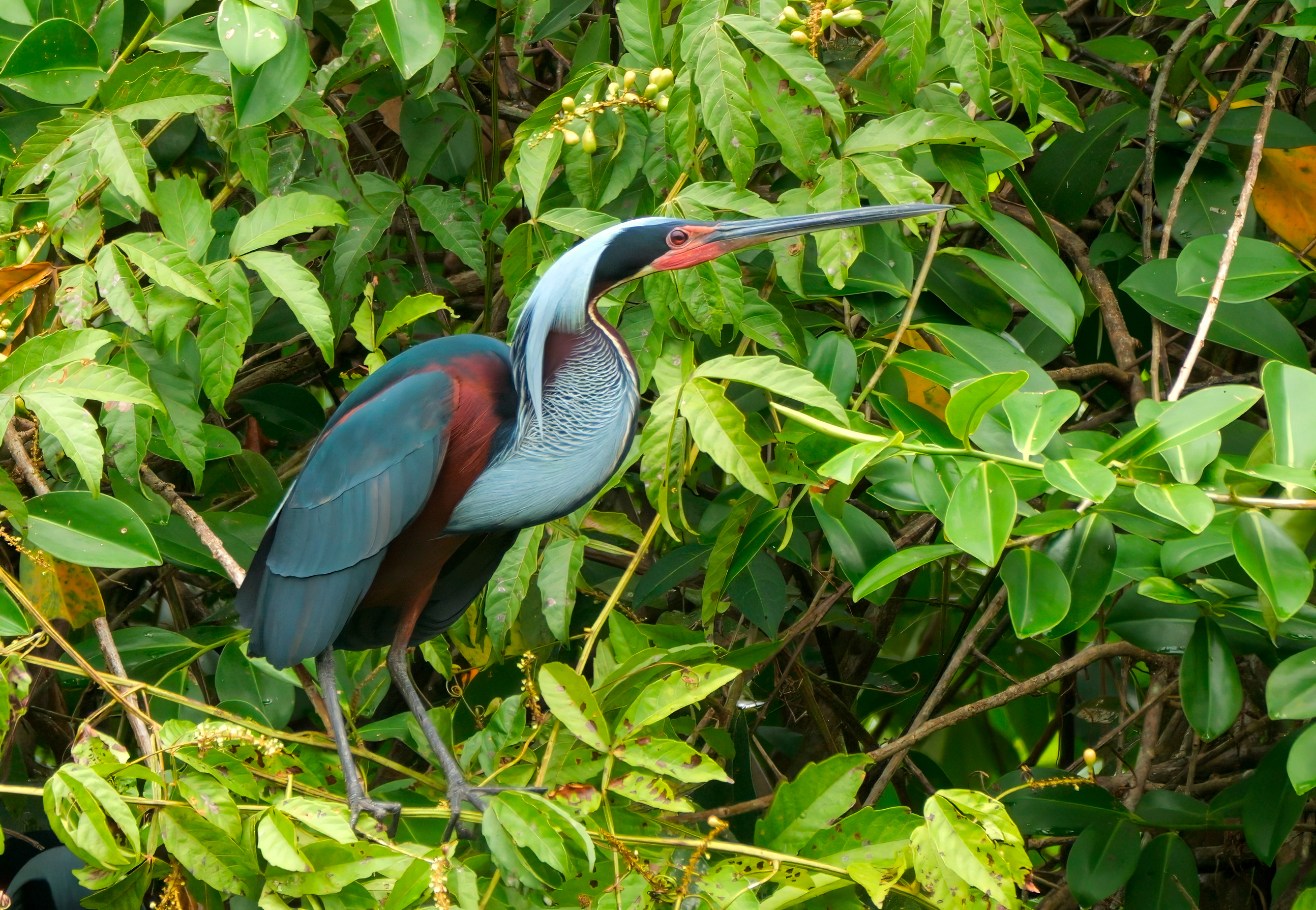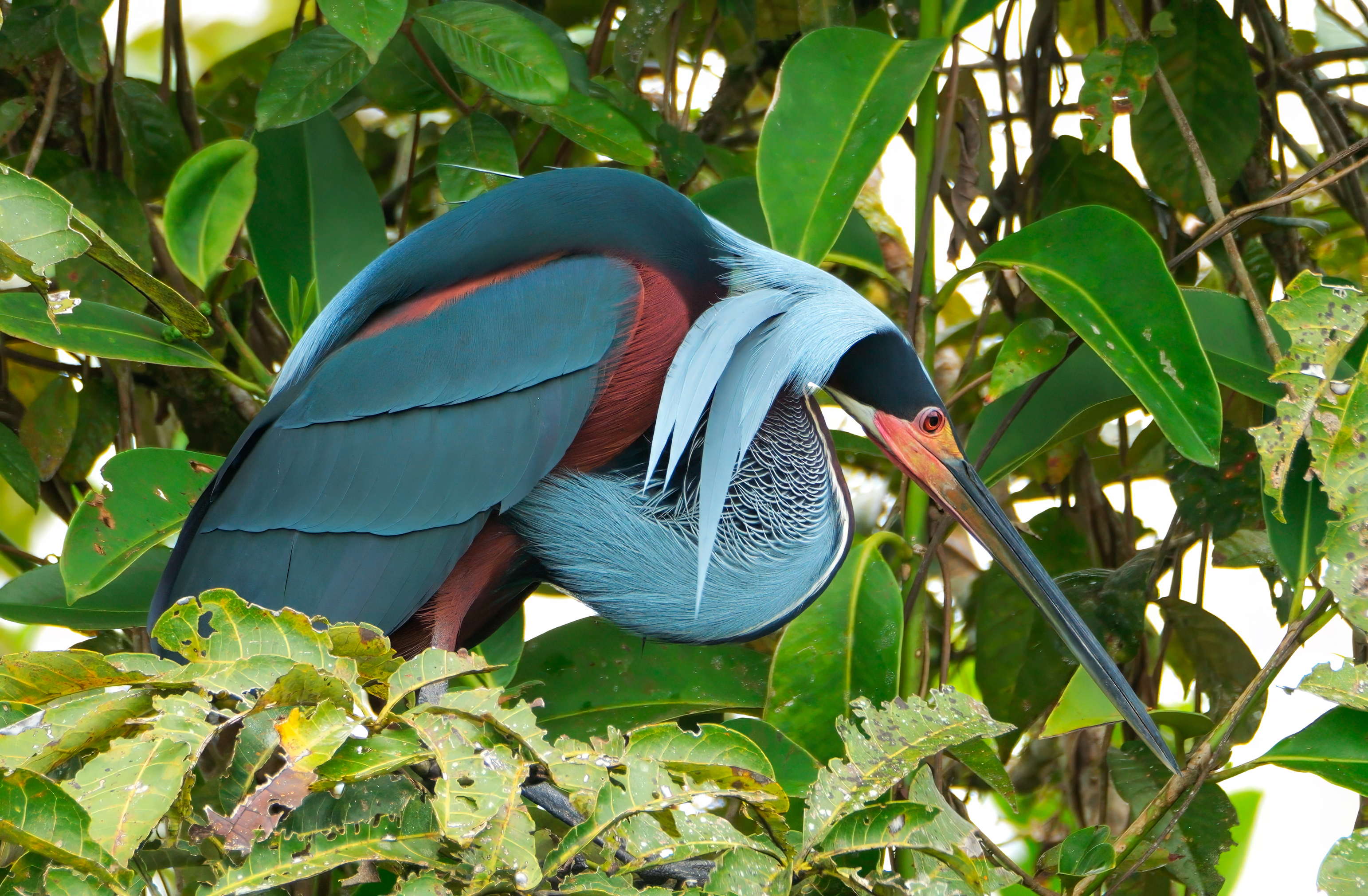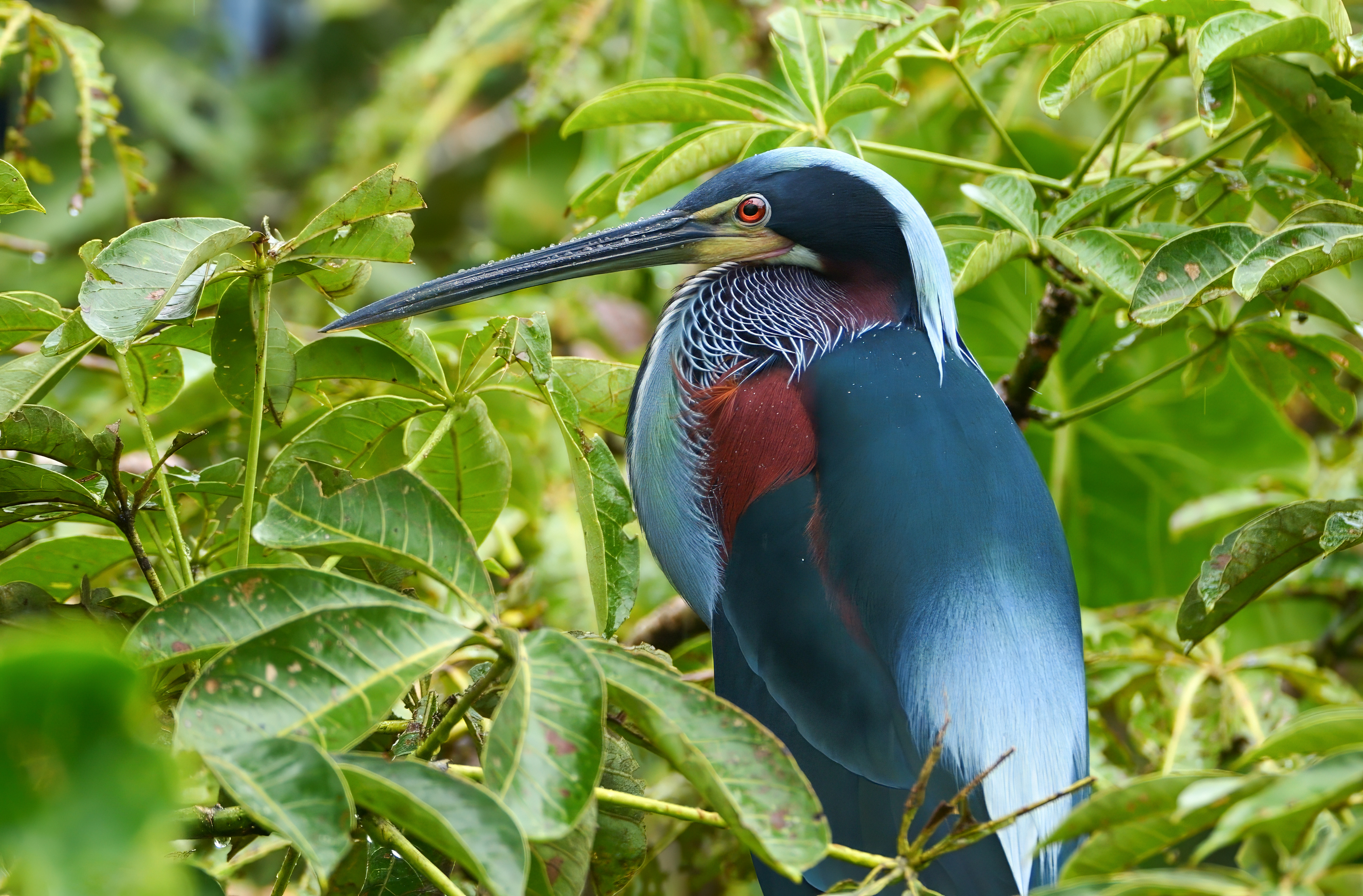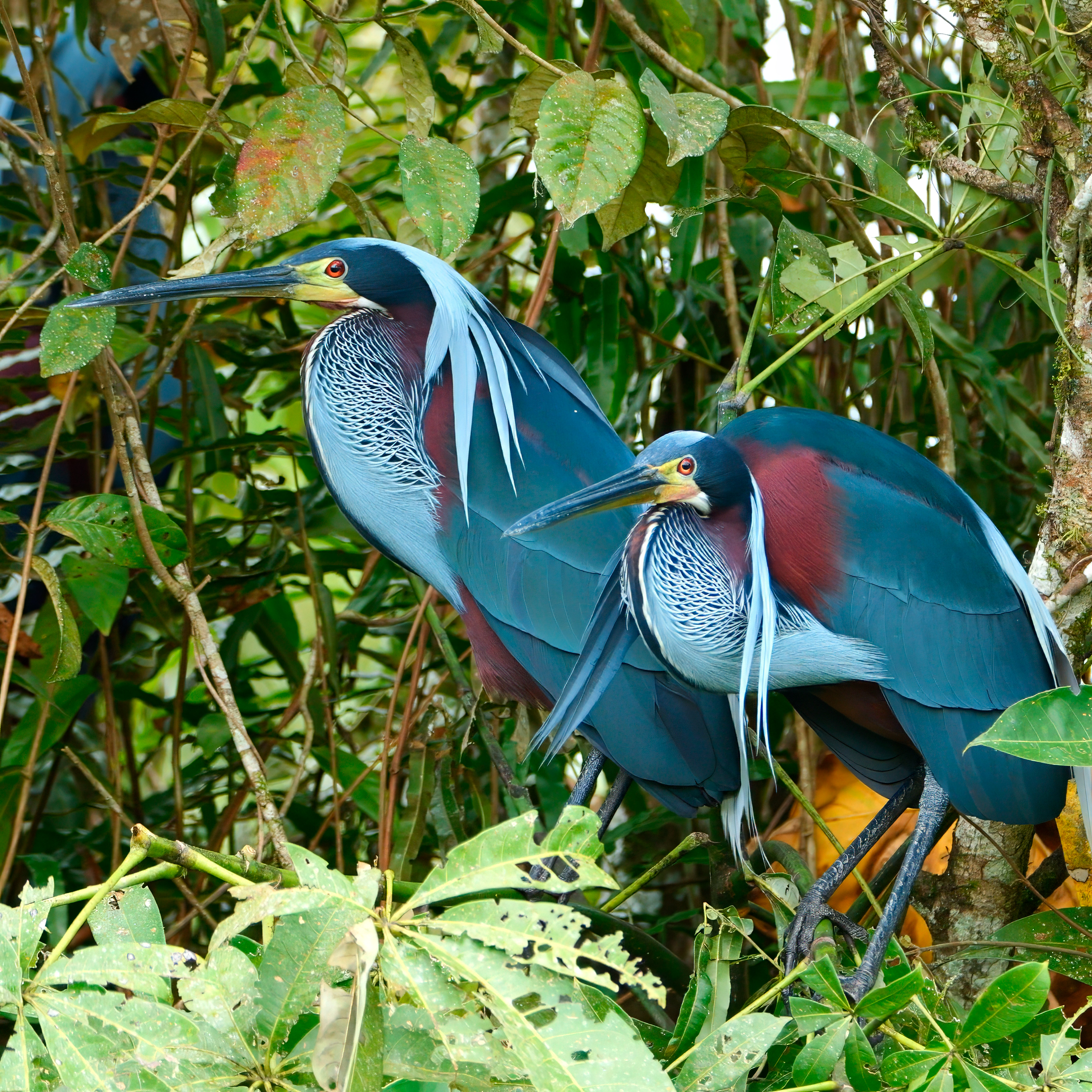
The Agami Heron
A Very Special Species
Discover the elusive and elegant heron that calls our reserve home

A Very Special Species
Discover the elusive and elegant heron that calls our reserve home
Understanding this elusive and threatened species
The Agami Heron is an elusive bird that represents one of nature's most elegant wetland inhabitants. These magnificent herons spend most of the year along the edges of lagoons or streams, under the protective cover of dense vegetation. Their shy nature and preference for secluded habitats makes them difficult to observe, which is why we still don't have an accurate estimate of their global population.
This species is classified as nearly threatened, primarily because it depends on specific habitats: swamp forests, mangroves, or forest streams usually below 300 meters in elevation. While this type of habitat was once common throughout Central and South America just a few hundred years ago, the expansion of cattle ranching and agriculture has dramatically decreased the availability of these unique wetland ecosystems.
When the Agami Heron nests, it does so in spectacular large rookeries, some containing hundreds or even a thousand nests in a single area. While there are a few large rookeries scattered across Central and South America, the discovery of a new nesting location near Katira de Guatuso, Costa Rica in 2025 provides one of the most accessible opportunities to observe this amazing bird in its natural habitat.

While there are a few Agami Herons that live in the reserve year-round, the real spectacle is the remarkable community of birds that forms during the nesting season. This is when visitors can witness the full majesty of these elegant creatures in their most active and social period.
The birds begin gathering in May of each year and remain at the reserve until September, when the young have become independent and the birds disperse. During this period, visitors can observe courtship displays, nest building, egg incubation, and chick rearing - a complete cycle of heron family life.
Some birds will travel hundreds of kilometers away from Agami Island during the non-breeding season, making the nesting period the optimal time to observe these magnificent birds in their full glory.

Understanding the annual cycle of this remarkable species
The herons are not breeding during this time and forage independently in their preferred wetland habitats.
Colony formation begins in remote areas. Adults develop nuptial (more colorful) plumage for courtship displays.
Nesting occurs in colonies, usually in trees over water. Each clutch contains 2–4 eggs, carefully tended by both parents.
Incubation lasts approximately 26–28 days. Both parents take part in incubation duties, sharing the responsibility equally.
Chicks are fed in the nest for 3–4 weeks. They then begin to move around nearby branches, developing their independence.
Young herons become independent and learn to forage on their own. The colony gradually dissolves as birds disperse.
Birds return to solitary habits. They disperse widely to forage and become difficult to observe in their scattered locations.
The Agami Heron faces significant conservation challenges due to habitat loss and degradation. Understanding their status helps us appreciate the importance of protecting their remaining habitats.
The species is classified as nearly threatened, indicating it may become endangered if current trends continue.
Depends on specific wetland habitats that have been dramatically reduced by agriculture and development.
Requires safe, undisturbed areas for nesting colonies, making them vulnerable to habitat fragmentation and human disturbance.

Experience the wonder of the Agami Heron in its natural habitat. Visit during nesting season to see these elegant birds in their full glory, from courtship displays to chick rearing. Your visit supports conservation efforts and helps protect this threatened species.